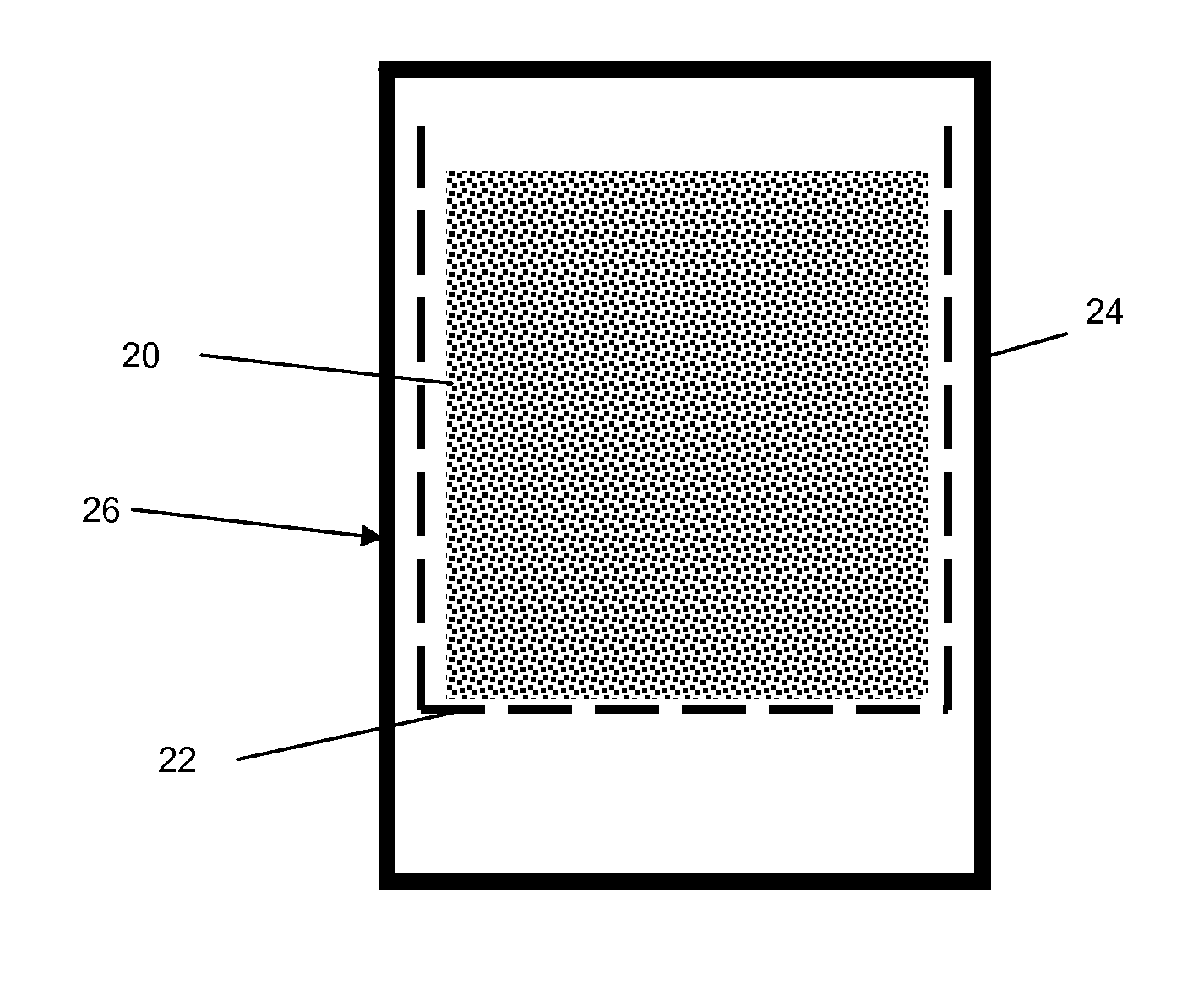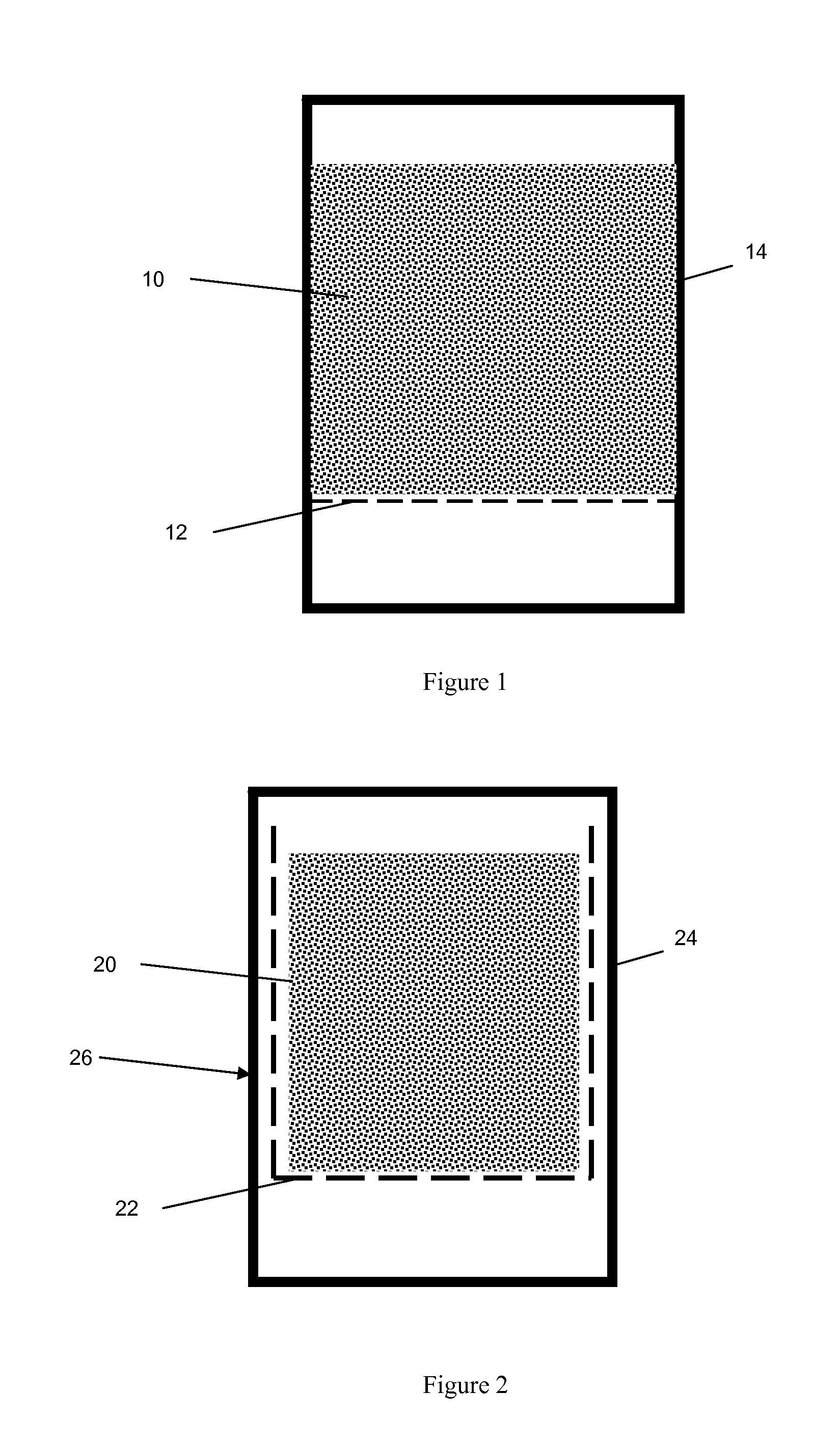Method of Preparing a Molecular Sieve Composition
a technology of molecular sieve and composition, which is applied in the field of molecular sieve preparation, can solve the problems of difficult to ensure the uniformity of crystallization conditions, difficult to achieve the effect of uniform crystallization conditions, and enhanced vaporized atmospher
- Summary
- Abstract
- Description
- Claims
- Application Information
AI Technical Summary
Benefits of technology
Problems solved by technology
Method used
Image
Examples
example 1
[0082]A 750 g sample of the above-formed wet pre-formed extrudate was placed in a 2-liter autoclave with wire mesh support as shown in FIG. 1. The mesh size of the support was 2 mm. The distance between bottom of autoclave and wire mesh support is >1.25 cm (½″).
[0083]The extrudate was crystallized at 160° C. (320° F.) for 96 hrs. After the reaction the product was discharged, washed with water and dried at 120° C. (250° F.), the XRD pattern of the synthesized material showed the typical pure phase of MCM-22 topology. Scanning Electron Microscopy (SEM) analysis showed that the material is composed of agglomerates of platelet crystals (with a crystal size of about 1 microns). The synthesized extrudate was pre-calcined in nitrogen at 482° C. (900° F.) for 3 hrs and was then converted into the hydrogen form by three ion exchanges with ammonium nitrate solution at room temperature, followed by drying at 120° C. (250° F.) and calcination at 540° C. (1000° F.) for 6 hours. The resulting ex...
example 2
[0084]A 500 g sample of the wet pre-formed extrudate produced as described in Example 1 was placed in a 2-liter autoclave with wire mesh holder as shown in FIG. 2. The mesh holder separates the sample from the bottom of autoclave and side walls by a distance of greater than 1.25 cm (½″).
[0085]The extrudate was crystallized at 160° C. (320° F.) for 96 hrs. After the reaction the product was discharged, washed with water and dried at 120° C. (250° F.). The XRD pattern of the synthesized material again showed the typical pure phase of MCM-22 topology. The SEM showed that the material is composed of agglomerates of platelet crystals (with a crystal size of about 0.5 microns). The crush strength of the synthesized sample was measured at 12.35 kg / cm (69 lb / inch) which is higher than the crystal in Example 1. The extrudate was pre-calcined in nitrogen at 482° C. (900° F.) for 3 hrs and then was converted into the hydrogen form by three ion exchanges with ammonium nitrate solution at room t...
example 3
[0092]The wet extrudates were placed in a 2-liter autoclave with wire mesh support as shown below. The distance between the bottom of the autoclave and the wire mesh support was greater than 1.25 cm (½″). A mixture of 300 g of DI water and 200 g of HMI was added to the bottom of the autoclave. The extrudates were crystallized at 160° C. (320° F.) for 120 hrs. After the reaction, the product was discharged, washed with water, and dried at 120° C. (250° F.). XRD patterns of the as-synthesized and calcined materials showed the typical pure phase of MCM-22 topology identical to the topology of the MCM-22 as prepared in the presence of HMI. SEMs of the as-synthesized material showed that the material was composed of agglomerates of platelet crystals with a crystal size of about 1-2 microns. The resulting dried extrudate had a SiO2 / Al2O3 molar ratio of 22.2 and crush strength of 3.6 kg / cm (20 lb / inch). Calcined extrudate had a surface area of 640 m2 / g, bulk density of 0.41 g / ml, and a tot...
PUM
| Property | Measurement | Unit |
|---|---|---|
| pressures | aaaaa | aaaaa |
| pressures | aaaaa | aaaaa |
| pressures | aaaaa | aaaaa |
Abstract
Description
Claims
Application Information
 Login to View More
Login to View More - R&D
- Intellectual Property
- Life Sciences
- Materials
- Tech Scout
- Unparalleled Data Quality
- Higher Quality Content
- 60% Fewer Hallucinations
Browse by: Latest US Patents, China's latest patents, Technical Efficacy Thesaurus, Application Domain, Technology Topic, Popular Technical Reports.
© 2025 PatSnap. All rights reserved.Legal|Privacy policy|Modern Slavery Act Transparency Statement|Sitemap|About US| Contact US: help@patsnap.com


